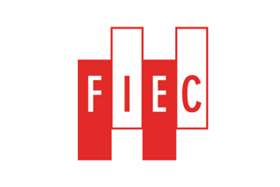FIEC: EU taxonomy and sustainable activity
16 October 2020

Contractors’ association examines EU’s plans to meet its Paris Agreement commitments
This Regulation establishes the criteria for determining whether an economic activity qualifies as environmentally sustainable for the purposes of establishing the degree to which an investment is environmentally sustainable.”
This is what the Regulation (EU) 2020/852 on the establishment of a framework to facilitate sustainable investment, also often referred to as taxonomy regulation, is about: Putting in place a common language for the environmental sustainability of economic activities. That makes it one of the most important pieces of legislation when it comes to the transition to a sustainable economy.
Initially designed for the labelling of financial products and the disclosure of non-financial information by large companies, the European Commission (EC) is already exploring whether the taxonomy can be used in EU funding or green public procurement. Unsurprisingly, the engagement of stakeholders regarding this topic is high. For instance, the EC received more than 500 applications for about 50 seats in an expert group that will further develop the taxonomy in the coming years.
Background
The EU taxonomy has its origin in the Action Plan on Sustainable Financing that was set up in March 2018 by the EC to honour the EU’s commitments within the Paris Agreement from 2015. The Action Plan comprises among other things the above-mentioned regulation, the objective of which is to create uniform criteria to assess the degree of sustainability of economic activities to foster investments in such activities.
To elaborate these specific criteria a Technical Expert Group (TEG) has been set up and the EC will lay down the taxonomy based on the findings of this report. The Regulation also entails the establishment of a Platform on Sustainable Finance which will take the form of an expert group and replace the TEG while having similar tasks, ie advising the European Commission on the specific criteria.
Covered construction activities
While the EU Taxonomy covers a wide range of economic activities, several construction activities will be covered by the taxonomy. To name only a few, the construction of new buildings, the renovation of existing buildings and the construction of low carbon land transport infrastructure are encompassed. While FIEC is not opposed to the EU taxonomy, we think it will not trigger additional investments in sustainable construction if the EC copies the TEG proposal. It is not that companies could not build what is being requested. It is rather that construction costs would be too high and clients would eventually refrain from investing.
Costly requirements for new buildings and renovations
By way of illustration, to be considered as environmentally sustainable, the primary energy demand of a newly constructed building would have to be at least 20% lower than the primary energy demand resulting from the relevant “nearly zero-energy building” (NZEB) requirements.
First, such a requirement overrules legislation that was recently adopted, and which has the objective of contributing significantly to the mitigation of climate change. The NZEB requirements are just in the process of being implemented at national level. Second, such a requirement is not neutral. Meeting the 20% target will be more challenging in countries where requirements are already demanding. For example, in France, only 3% of the houses constructed during the period from 2014 and 2019 would fall under this category. This low percentage is due to the ambitious technical requirements that need to be fulfilled and the related increased construction costs that inhibit such projects.
Financial savings on energy bills may be insufficient to achieve a return on investment within the lifetime of materials used. As it stands now, the taxonomy will not trigger additional investments in newly constructed buildings. Therefore, FIEC advocates for linking the eligibility for the construction of new buildings to the Energy Performance of Buildings Directive (EPBD) to support the enforcement of the latter, instead of imposing even stricter requirements. In a similar vein, we are convinced that the EU Taxonomy can become a supportive instrument for the forthcoming renovation wave if it properly considers the technical feasibility and associated costs of stricter requirements.
Low carbon infrastructure – more than electric vehicles
What is on the table regarding low carbon land transport infrastructure is, in our view, too restrictive an interpretation of what transport infrastructure can contribute to mitigate climate change. Demands for transport infrastructure to be considered as environmentally sustainable are mainly linked to vehicles.
This falls short of the reduction in emissions stemming from the infrastructure and its interaction with the vehicles. FIEC therefore advocates the inclusion of construction, upgrades, and maintenance of infrastructure in the taxonomy, as these activities contribute to the reduction of emissions in the transport sector by improving rolling resistance and reducing congestion.
Taxonomy and recovery
Sustainable finance with the EU Taxonomy at its heart the key to achieving a sustainable recovery after the crisis. This is particularly the case for the construction sector, which is essential for making the transition to a more sustainable economy a reality.
The investment gap for the sector is immense. Filling this gap by targeting sustainable construction projects – ie buildings and infrastructure – will bring benefits for the entire economy and will make a significant contribution to the realisation of the Green Deal’s objectives.
FIEC SECURES KEY APPOINTMENT ON PLATFORM ON SUSTAINABLE FINANCE

From 503 applicants, FIEC was appointed as a member of the new platform and will be among the 50 experts to advise the European Commission on the development of the technical screening criteria for the EU Taxonomy.
This membership is a unique opportunity for FIEC to ensure the industry’s contribution to a sustainable Europe by making construction activities more sustainable.
The EU Taxonomy is the key to achieving a sustainable recovery after the crisis. This is particularly the case for the construction sector, which is essential for making the transition to a more sustainable economy a reality. The investment gap for the sector is immense.
Filling this gap by launching sustainable construction projects, ie buildings and infrastructure, will bring benefits for the entire economy and will significantly contribute to the achievement of the Green Deal’s objectives.
The list of members of the platform can be found here.






